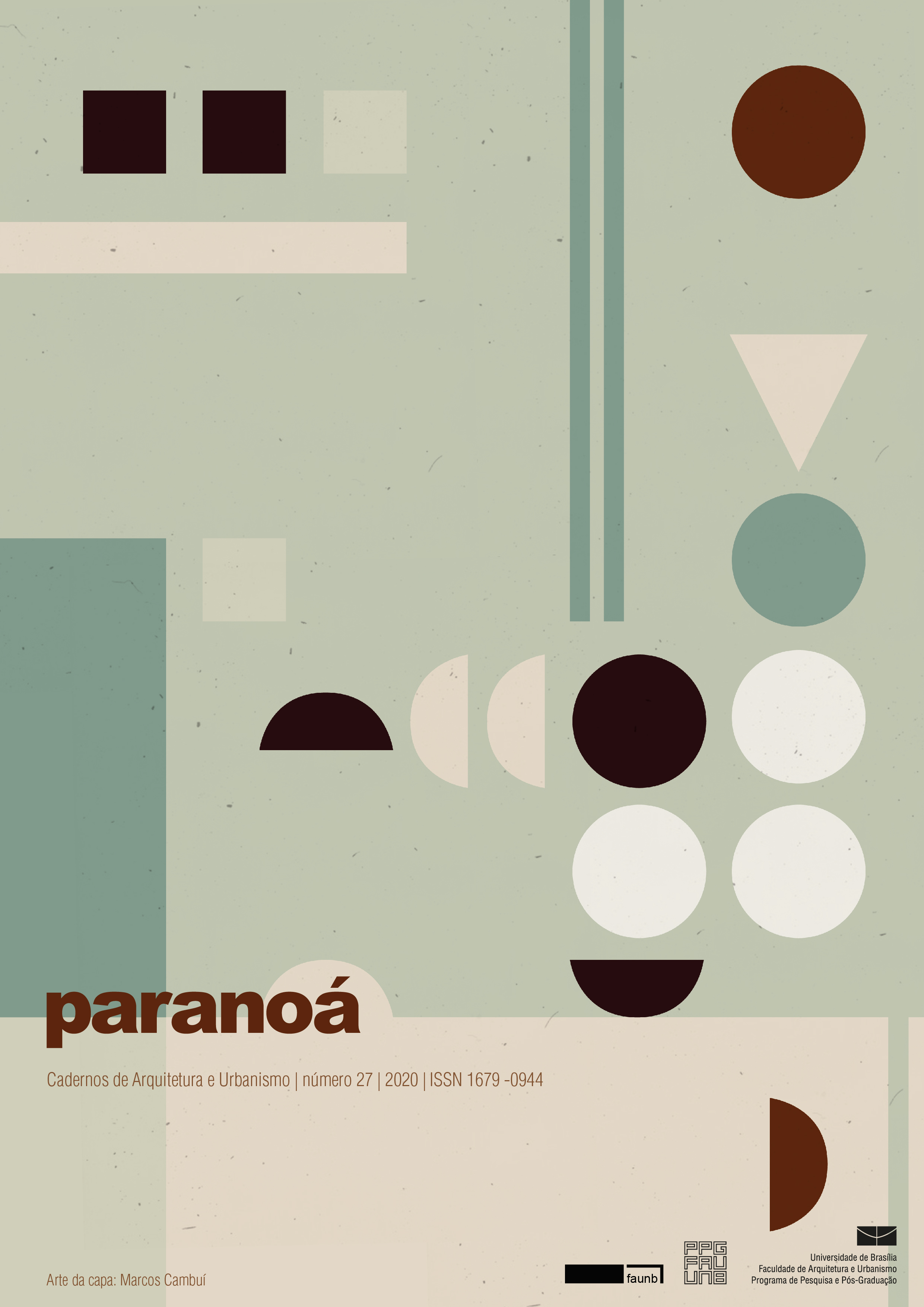Analysis and design of precast concrete spandrel beams using the Strut-and-Tie Method
DOI:
https://doi.org/10.18830/issn.1679-0944.n27.2020.01Keywords:
Precast concrete; Spandrel beams; Strut-and-Tie Method; Torsion.Abstract
Among the elements in precast concrete structures, the L-shaped spandrel beams are widely used in the exterior edge of buildings. The three-dimensional geometry and the external loads applied eccentrically on a continuous ledge make this type of section subject to both normal and shear stresses, generating in this way a complex stress state. The fact that the connections with the supports are also subject to torsion makes the design of the spandrel beams one of the most complex among the precast concrete elements due to features that do not occur in the conventional beam models. In this context, this paper aims at presenting the analysis and design of precast concrete spandrel beams using the Strut-and-Tie Method. For this, a numerical example was developed with software CAST covering all design steps and respecting the parameters recommended by ABNT NBR 6118:2014. Finally, the presented method could be validated by comparing with results obtained through different alternative analytical methods present in the international literature, demonstrating that Strut-and-Tie Method is a highly competitive tool for design of precast concrete spandrel beams.
Downloads
References
ACI COMMITTEE 318. Building Code Requirements for Structural Concrete (ACI 318-19) and Commentary (ACI 318R-2019). Detroit, MI: ACI Comitee 318, 2019.
ASSOCIAÇÃO BRASILEIRA DE NORMAS TÉCNICAS. NBR 6118: Projeto de estruturas de concreto - Procedimento. Rio de Janeiro: ABNT, 2014.
BUILDING AND CONSTRUCTION AUTHORITY (BCA). Structural Precast Concrete Handbook. 2. ed. Singapura: Technology Development Division of the Building and Construction Authority. 2001.
BRITISH STANDARDS INSTITUTION. BS 8110-1: The structural use of concrete. Part 1: Code of practice for design and construction. London, 1997.
CANADIAN STANDARDS ASSOCIATION. CSA A23.3: Design of concrete structures. Mississauga, Canada, 2014.
COLLINS, M. P.; MITCHELL, D. Shear and torsion design of prestressed and non-prestressed concrete beams. PCI Journal, v. 25, n. 4, 1980.
COMITÉ EURO-INTERNATIONAL DU BÉTON. fib Model Code for Concrete Structures 2010. Berlin, Germany, 2013.
HARIHARAN, V.; LUCIER, G.; RIZKALLA, S.; ZIA, P.; KLEIN, G; GLEICH, H. Behavior of compact L-shaped spandrel beams with alternative web reinforcement. PCI Journal, v. 64, p. 39”“54, March - April, 2019.
HASSAN, T. Finite element study of shear behavior of spandrel ledges and comparison with PCI shear design provisions. Advances in Structural Engineering, v. 10, n. 5, 2007.
HASSAN, T.; LUCIER, G.; RIZKALLA, S.; ZIA, P. Modeling of L-shaped, precast, prestressed concrete spandrels. PCI Journal, v. 52, n. 2, 2007.
INTERNATIONAL FEDERATION FOR STRUCTURAL CONCRETE. FIB BULLETIN 61: Design examples for strut-and-tie models. Switzerland, 2011.
KLEIN, G. J. Design of spandrel beams. PCI Journal, v. 31, n. 5, p. 76-124, 1986.
LOGAN, D. R. L-spandrels: Can torsional distress be induced by eccentric vertical loading? PCI Journal, v. 52, n. 2, p. 46-61, 2007.
LUCIER, G.; WALTER, C.; RIZKALLA, S.; ZIA, P.; KLEIN, G. Development of a rational design methodology for precast concrete slender spandrel beams: Part 1, experimental results. PCI Journal, p. 88-112, 2011a.
LUCIER, G.; WALTER, C.; RIZKALLA, S.; ZIA, P.; KLEIN, G. Development of a rational design methodology for precast concrete slender spandrel beams: Part 2, analysis and design guidelines. PCI Journal, p. 106-133, 2011b.
MARTI, P. Truss Models in Detailing. Concrete International, v.82, n.1, p. 66-73, 1985.
MERCAN, B.; SCHULTZ, A. E.; STOLARSKI, H. K. Finite element modeling of prestressed concrete spandrel beams. Engineering Structures, v. 32, n. 9, p. 2804”“2813, 2010.
NAFADI, M. K.; LUCIER, G. W.; RIZKALLA, S.; ZIA, P.; KLEIN, G. J. Development of design guidelines for ledges of L-shaped beams. PCI Journal. v. 63, p. 32”“49, April, 2018.
PASTORE, M. V. F. Contribuição ao projeto de vigas delgadas de seção “L” de concreto pré-moldado. 180 f. Dissertação (Mestrado) ”“ Escola de Engenharia de São Carlos, Universidade de São Paulo, São Carlos, 2015.
PRECAST/PRESTRESSED CONCRETE INSTITUTE. PCI Design Handbook: Precast and Prestressed Concrete. MNL- 120. 7th ed. 2010.
RATHS, C. H. Spandrel beam behavior and design. PCI Journal, v. 29, n. 2, p. 62-131,1984.
VAN ACKER, A. Manual de Sistemas Pré-Fabricados de Concreto. Lausanne: FIB, 2002. Tradução de: Marcelo Ferreira (ABCIC, 2003).
TJHIN, T. N.; KUCHMA, D. A. Computer-based tools for design by strut-and-tie method: Advances and challenges. ACI Structural Journal, v. 99, n. 5, p. 586”“594, 2002.
ZIA, P.; MCGEE, W. D. Design for Torsion and Shear in Prestressed Concrete. PCI Journal, v. 19, n. 2, p. 46-65, 1974.
ZIA, P.; HSU, T. T. C. Design for Torsion and Shear in Prestressed Concrete Flexural Members. PCI Journal, v. 49, n. 3, p. 34-42, 2004.
Downloads
Published
How to Cite
Issue
Section
License
Autores que publicam nesta revista concordam com os seguintes termos:
- Autores mantém os direitos autorais e concedem à revista o direito de primeira publicação, com o trabalho simultaneamente licenciado sob a Licença Creative Commons Attribution que permite o compartilhamento do trabalho com reconhecimento da autoria e publicação inicial nesta revista. http://creativecommons.org/licenses/by/4.0
- Autores têm autorização para assumir contratos adicionais separadamente, para distribuição não-exclusiva da versão do trabalho publicada nesta revista (ex.: publicar em repositório institucional ou como capítulo de livro), com reconhecimento de autoria e publicação inicial nesta revista.
- Autores têm permissão e são estimulados a publicar e distribuir seu trabalho online (ex.: em repositórios institucionais ou na sua página pessoal) a qualquer ponto antes ou durante o processo editorial, já que isso pode gerar alterações produtivas, bem como aumentar o impacto e a citação do trabalho publicado (Veja O Efeito do Acesso Livre).















